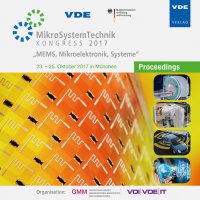Fabrication Advances for Microfluidic Cryofixation
Conference: MikroSystemTechnik 2017 - Kongress
10/23/2017 - 10/25/2017 at München, Deutschland
Proceedings: MikroSystemTechnik 2017
Pages: 4Language: englishTyp: PDF
Personal VDE Members are entitled to a 10% discount on this title
Authors:
Fuest, Marie; Nocera, Giovanni M.; Modena, Mario M.; Burg, Thomas P. (Max Planck für Biophysikalische Chemie, Am Fassberg 11, 37077 Göttingen, Germany)
Abstract:
Abstract Correlative microscopy, connecting live-cell fluorescence microscopy with electron microscopy (EM), is a powerful tool to relate a dynamic cellular process to the relevant cellular ultrastructure. The time resolution with which these images can be correlated is generally limited by sample preparation procedures needed for electron microscopy. Cryofixation is widely accepted as the gold standard fixation method for high-resolution imaging, but typically requires transfer of the sample from the light microscope to a rapid freezing instrument, such as a high pressure or plunge freezer. Our group has developed a microfluidic-based cryofixation method that improves the time resolution of image correlation from seconds to milliseconds by cryofixing the sample within the field of view of a light microscope. In order to attain high-quality structural preservation, the cooling rate within the channel must be between 104 ºC/s and 105 ºC/s. To achieve these cooling rates in a microfluidic device, the bottom wall of the microchannel must be less than ~5 µm thick. In this work we report on a fabrication procedure that uses soft lithography combined with a lift-off procedure to create a microfluidic channel with a 2.5 µm thick bottom wall. The new fabrication procedure is a key step towards the viability of our micro-fluidic cryofixation system as the material and thickness of the channel bottom are independent of the unsealed PDMS channel fabrication. The fabrication process is thus not limited to thin PDMS channel bottoms and can be extended to a variety of materials with higher thermal conductivity, such as silicon nitride.


